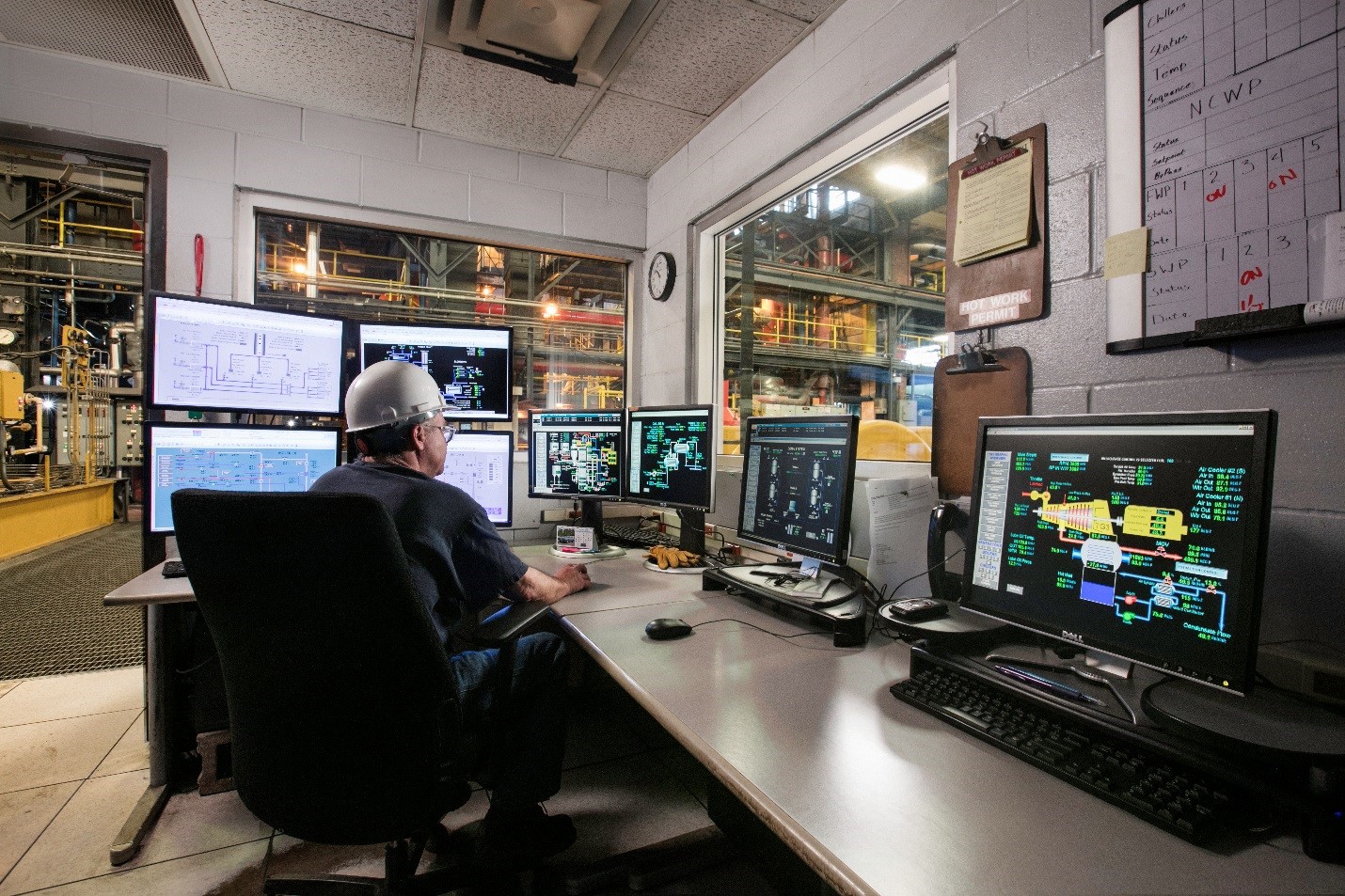Energy Production and Operation Facilities
Utility Services is a 24/7, 365 days per year operation to support the energy demands of the Iowa State University community. Utility staff operate and maintain four different energy production facilities and extensive utility distribution systems to serve the Iowa State Campus. Utility Services’ goal is to safely provide reliable, sustainable, and economical utility service to the campus.
Main Power Plant
The university constructed the Power Plant on the east edge of the campus in 1906, replacing the original plant building in 1891. The power plant has been upgraded and expanded many times to meet increased energy demands. There have also been many upgrades to improve environmental performance. Today, the Power Plant operates continuously and can supply all the heating, cooling and electrical needs for the main campus.
Several systems work together to allow the Power Plant to produce electricity, steam heat, and chilled water to meet the energy needs of the campus. The Power Plant contains five boilers, four steam turbine generators, four centrifugal chillers, a water plant, sixteen cooling tower cells and eight cooling water pumps, and four large air compressors.
The Power Plant uses a process called cogeneration, or combined heat and power to supply energy to campus. This process uses fuel to simultaneously produce both thermal energy and electricity. This process is very efficient and results in lower energy costs and reduced environmental emissions for campus. The power plant typically operates at an efficiency of 60% as compared to conventional power plants with an efficiency of 33-35%.
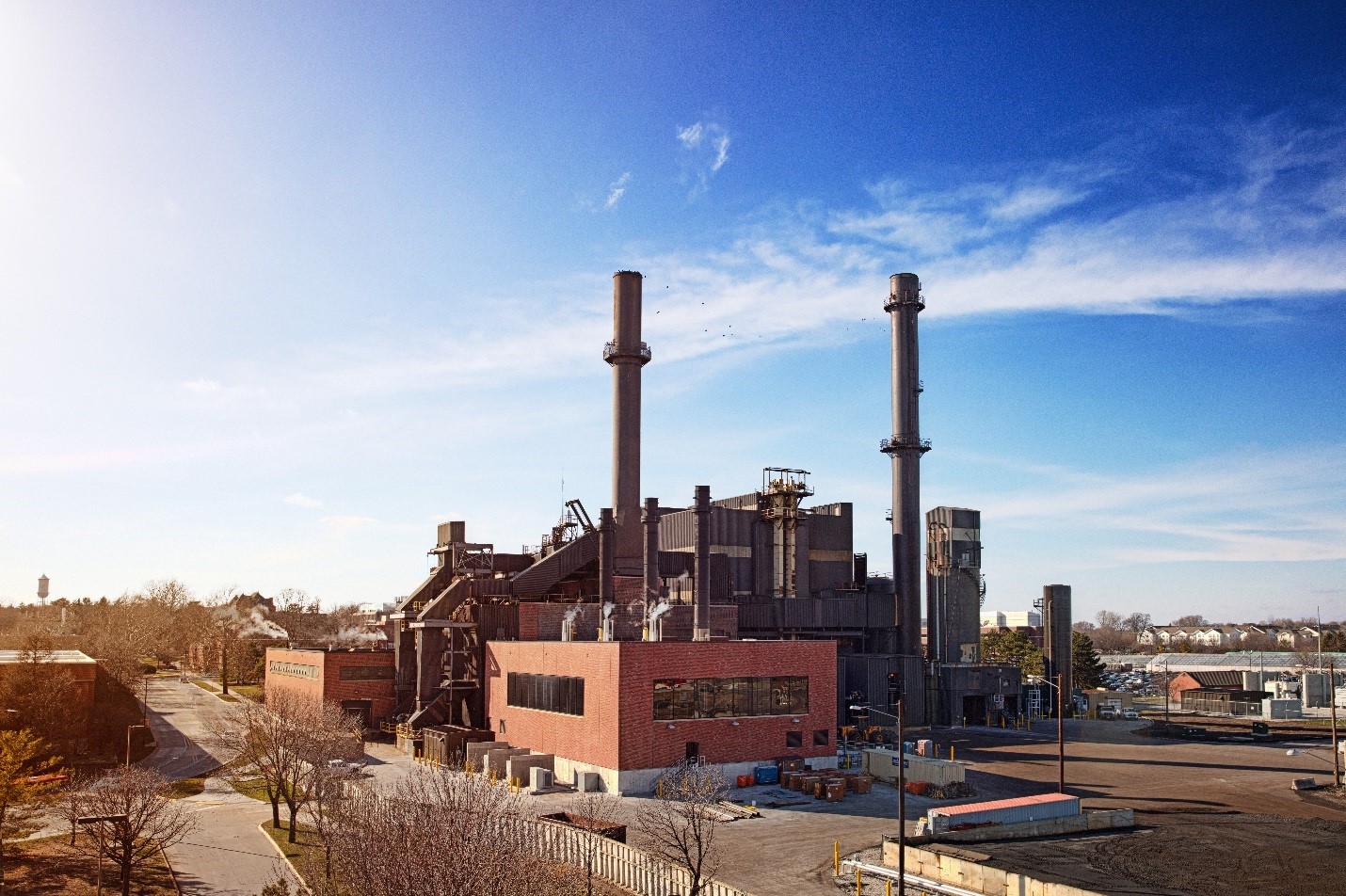
Boilers
The ISU Power Plant has five boilers that are capable of producing a total of 790,000 pounds per hour of steam. The boilers produce steam at 400 pounds pressure and 750 degrees F. The steam is used to generate electricity, heat the campus and to produce chilled water for cooling the campus. Two boilers are circulating fluidized bed boilers that burn coal and utilize limestone to minimize emissions. Three of the boilers burn natural gas with fuel oil as a backup fuel. Normally three of the five boilers are operating. The choice of boilers depends on anticipated campus energy demands and fuel prices.

Steam Turbine Generators
The Power Plant has four automatic extraction steam turbine generators that produce electricity for campus use. Steam from the boilers is used to spin turbines to generate electricity. After producing electricity, some of the steam is extracted from the turbines at 90 pounds pressure. The extracted steam is used to generate chilled water for cooling in the summer and supply heating in the winter.
The generators produce electricity at 13,800 volts, which is then distributed to campus substations. The combined capacity of the four generators is 46 megawatts. Typically, two generators are operating all the time and the third is added if the university chooses to generate all its own electricity.

Chillers
The Power Plant has four large centrifugal chillers that serve the cooling needs of the university. Three chillers use a steam turbine to drive the refrigerant compressor and the fourth chiller uses an electric motor drive. The chillers generate chilled water at 42° F which is pumped throughout the campus to cool the buildings. The total cooling capacity at the Power Plant is 17,000 tons of air conditioning.
The chillers operate in a similar fashion as a home air conditioner, only on a much larger scale. Chilled water is circulated through the building cooling equipment where it absorbs heat from the building. The warm water then returns to the power plant where the chillers transfer the heat to the cooling towers, discharging it to the atmosphere.

Water Plant
The Power Plant contains a water plant capable of treating 1,000 gallons of water per minute. This plant is designed to remove iron from groundwater pumped by two wells located northeast of the Power Plant. Up to one million gallons of water are treated daily to cool plant equipment and to replace water lost to evaporation in the cooling towers.
Cooling Towers
The Power Plant operates a large cooling tower to provide cooling water for the generators, steam condensers, chillers, and other plant equipment. The cooling tower consists of sixteen cooling tower cells, and eight cooling water pumps. Each pump can circulate 10,000 gallons of cooling water per minute.
The cooling towers are designed to cool water from 102° F to 85° F. Up to 80,000 gallons of cooling water are used by the Power Plant during peak times in the summer. The cooling water passes through large heat exchangers, removing heat from the equipment. The cooling water then returns to the top of the cooling tower, where it is sprayed down through the cooling towers. Sixteen 24-foot diameter fans pull air up through the cooling tower, cooling the water through evaporation. The fans then discharge warm, damp air to the atmosphere. During the summer months, the cooling tower evaporates more than one million gallons of water each day.
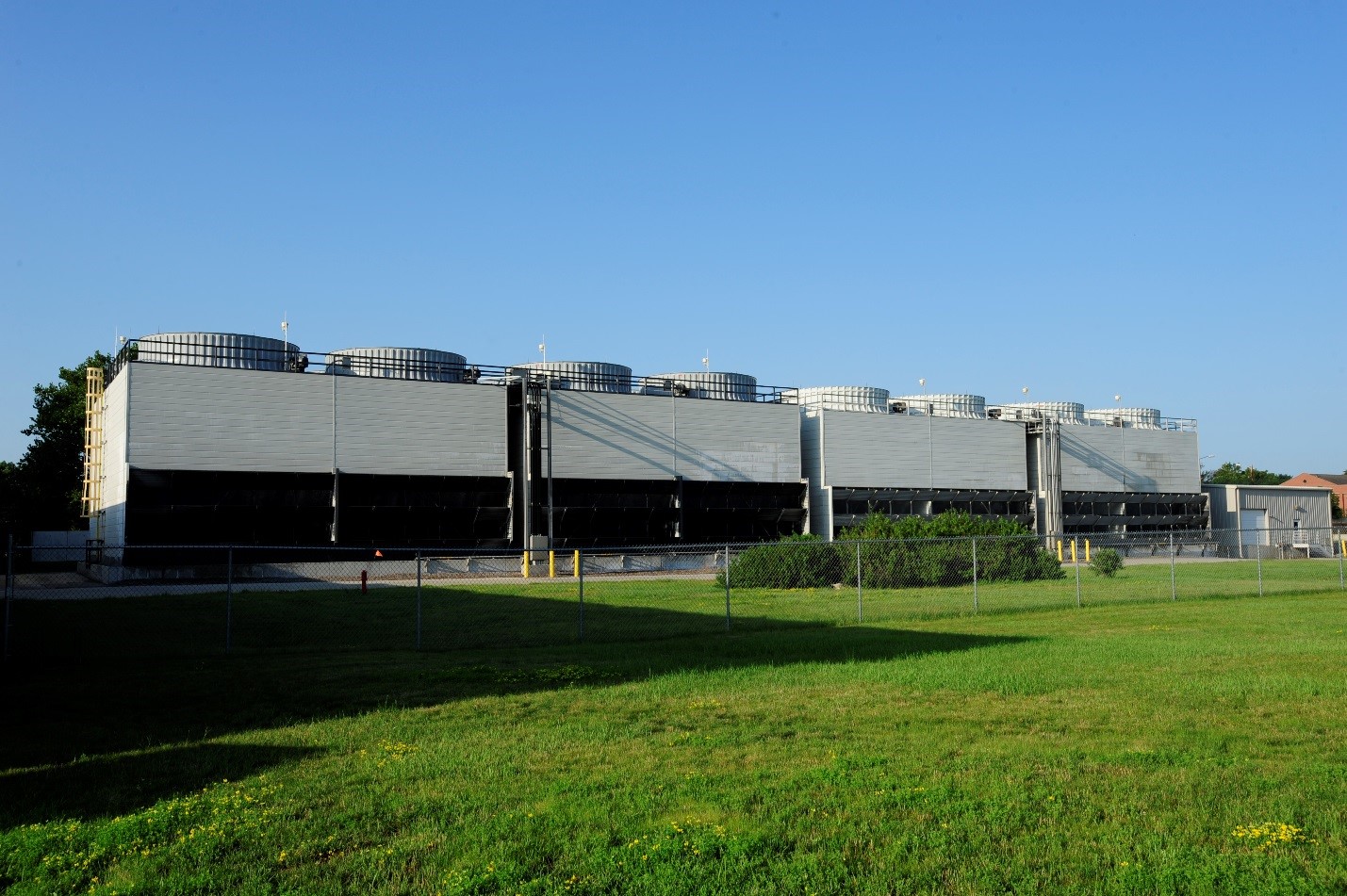
Air Compressors
Four large rotary-screw air compressors are located in the Power Plant, with a total compressed air capacity of 4,000 cubic feet per minute. Compressed air is used in the power plant and is distributed at 90 pounds to campus buildings through piping located in the steam tunnels.
North Chilled Water Plant
The university constructed the North Chilled Water Plant in 2003. The plant contains one steam-driven chiller and two electric-driven chillers along with the auxiliary equipment and cooling towers needed to support chiller operation. The North Chilled Water Plant has a capacity of 11,000 tons of cooling. The North Chilled Water Plant chillers and the main Power Plant chillers are interconnected and operate together to serve the cooling needs of campus. Some campus buildings require cooling year around, even through the winter months.
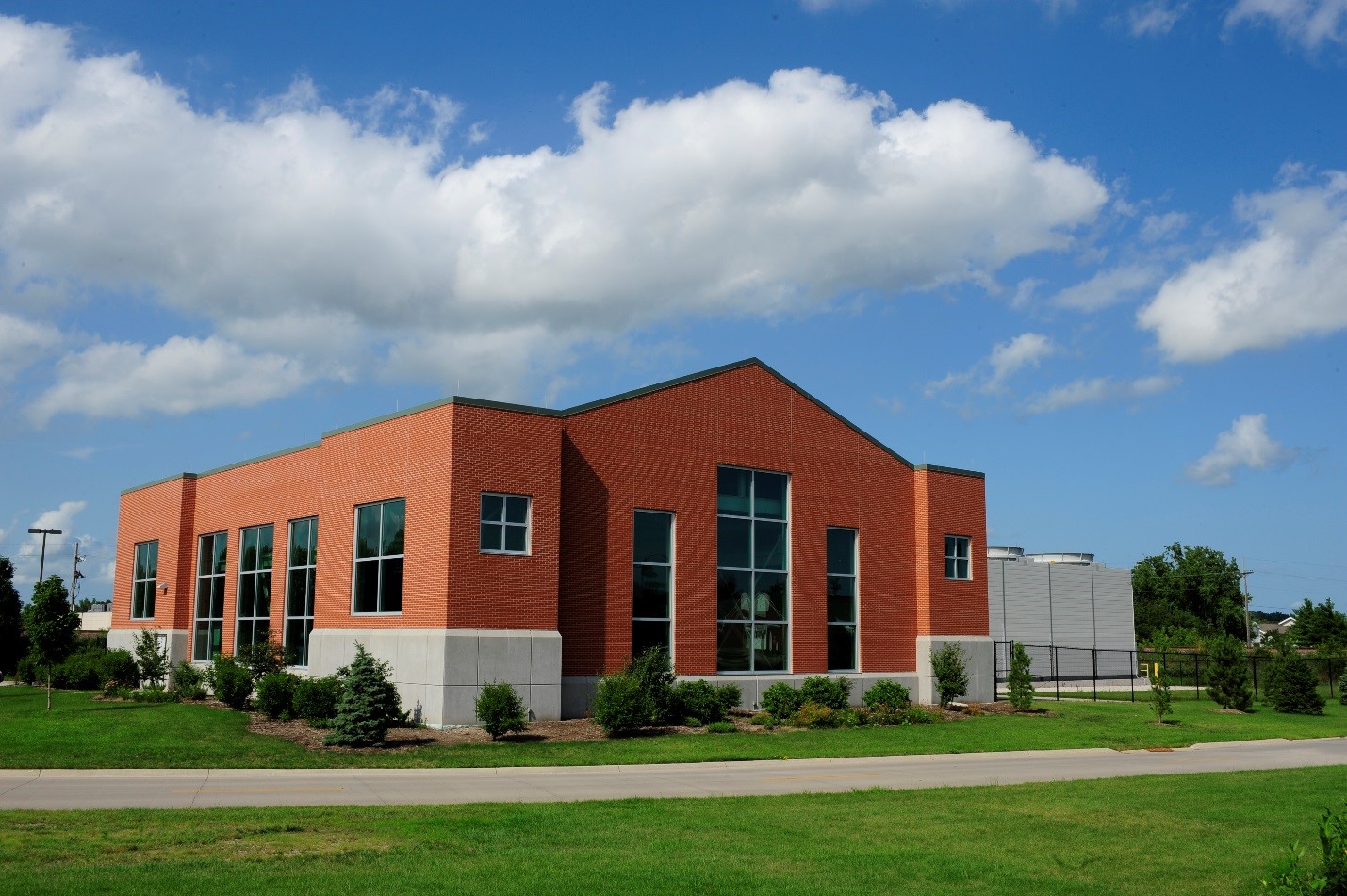
Veterinary Medicine Energy Plant
The Veterinary Medicine Energy Plant houses gas fired boilers and electric chillers to provide steam and chilled water for Veterinary Medicine and the Lloyd Animal Hospital. The university purchases electricity for the Veterinary Medicine complex from the City of Ames.
Applied Science Energy Plant
The Applied Science Energy Plant is located northwest of the main campus on School Road. This plant contains gas-fired boilers and electric chillers to provide steam and chilled water for the Applied Science Complex.
Haber Road Substation
The Iowa State University campus is connected to the nationwide electrical grid through the Haber Road Substation located directly north of the Power Plant. This substation contains two separate transformers connected to two separate electrical feeds from the City of Ames. The substation has the capacity to serve all of campus, even if the Power Plant is not operating.
Depending on availability and costs, Iowa State purchases wholesale electricity from the Midwest Independent System Operator (MISO). MISO operates the electrical grid serving the central part of the United States. Plant operators compare hourly electricity prices with the production costs at the Power Plant and they determine how much electricity to purchase or generate each hour. ISU operators coordinate with the City of Ames power plant operators to schedule and flow the purchased electricity into campus. The Power Plant has the capability to generate all the electricity if needed, but typically generates approximately 60 percent of the university's electricity.
Iowa State and the City of Ames are partners and together purchase electricity from a wind farm in northeastern Story County. The wind farm provides approximately 10 percent of the university’s electricity. Electricity from the wind farm comes to campus through the Haber Road Substation.
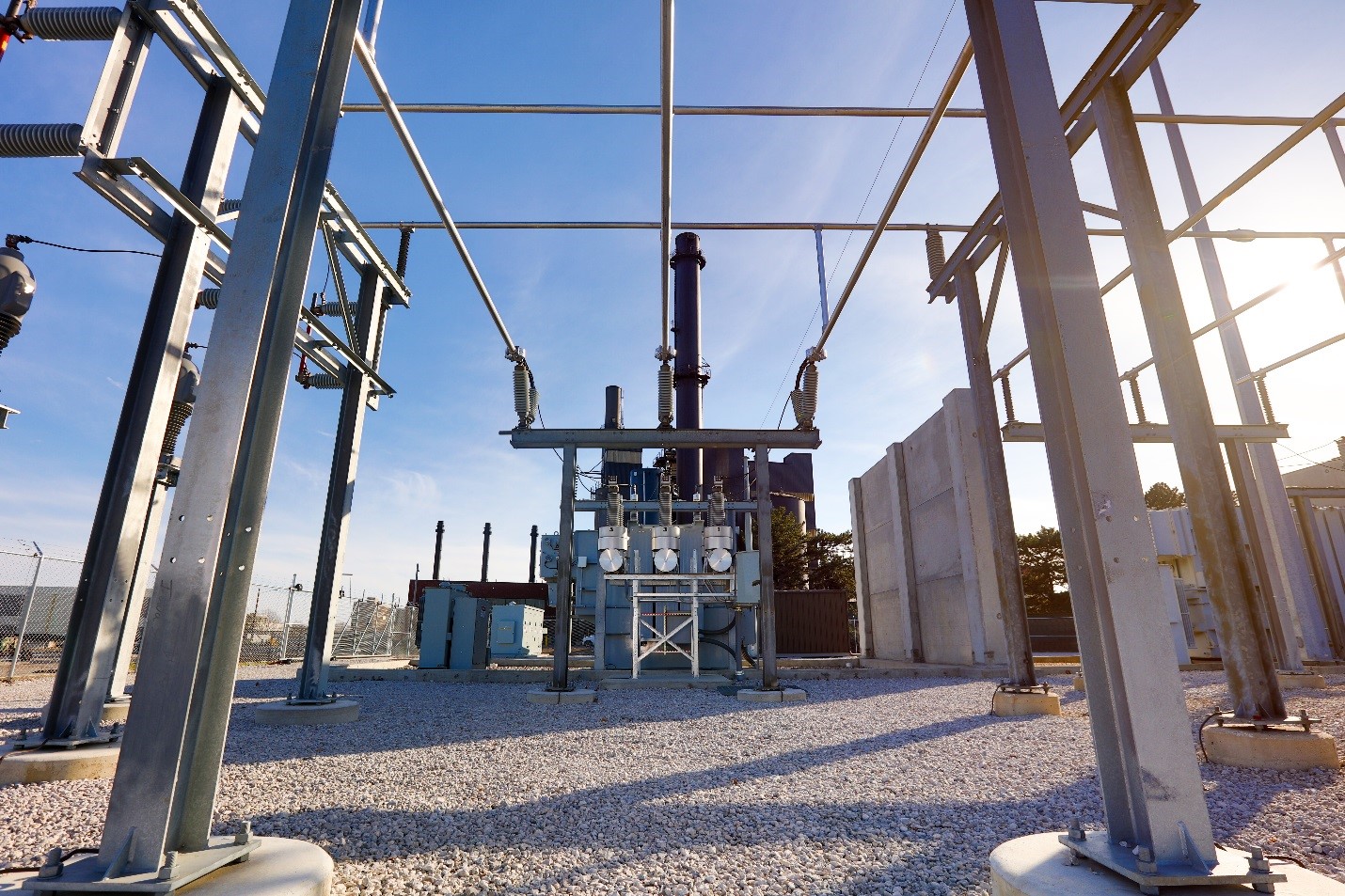
Control Room
Plant operators monitor and control the main Power Plant, North Chilled Water Plant, Veterinary Medicine Energy Plant and the Applied Science Energy Plant from a central control room located in the main power plant. The control room is staffed 24/7.
